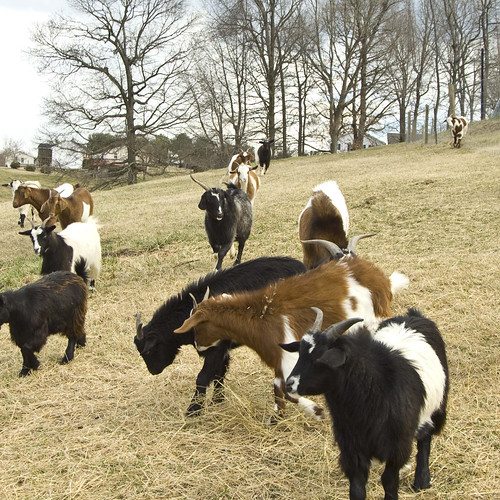
Last year brought some interesting weather to our country. A multi-day severe weather event included an EF3 tornado that carved a 68-mile path from Mississippi to Alabama. Parts of Colorado had flooding so severe it destroyed thousands of homes, and wiped out 200 miles of state roads and 50 state bridges. Winter Storm Nemo dropped a record snowfall of 31.9 inches in Portland, Maine. And, California recorded its driest year ever—fueling wildfires that burned some 8,000 acres in Southern California.
Any disaster, whether it’s a flood, tornado or earthquake, can catch you off guard and leave you in danger. It’s important to have an emergency plan in place for your family. And if you raise livestock, an emergency plan is important as well. Using the American Veterinary Medical Association’s (AVMA) procedures to prepare now, you can quickly and easily safeguard your livestock when disaster strikes.
- Prepare – Get a Livestock Evacuation Kit
- Include feed, water, supplements, supplies (medications, rope/lariat, halters/leads, cleaning supplies, knives, etc.), and papers (veterinary records and proof of ownership).
- Review your kit regularly to ensure contents, especially feed and medicines, are fresh.
- Plan – What You Will Do in an Emergency
- Determine if you are able to evacuate (This should be based on the type of disaster and the safety and stability of the shelter).
- Determine where you will go if you have to leave (Identify friends or relatives who could house livestock during the disaster, including fairgrounds or other livestock evacuation locations).
- Determine how you will evacuate (Decide how livestock will be transported/housed and prearrange an evacuation site).
In case you are not home:
- Designate a neighbor to tend to your livestock (This person should be familiar with your livestock, know your evacuation procedures, know where your evacuation kit is kept, and have your emergency contact information).
- Make sure livestock has some form of identification (microchip, ear/leg tag, leg band, tattoo etc.).
- Stay Informed—Know About Types of Emergencies
- It’s always a good idea to find out what types of emergencies could happen where you live and whether you need to make any specific preparations because of them. (A good basic emergency plan is to keep your livestock with you; what’s best for you is typically what’s best for your livestock. Plan to stay if it’s safe to do so, or leave if ordered to evacuate.)
- When disaster strikes, follow instructions of local emergency management to safeguard you, your family, and your livestock.
For more information about safeguarding your livestock family before a disaster occurs, check out the following links:
AVMA “Saving the Whole Family” (available in English and Spanish)
FEMA Ready.gov
Preparedness begins at home, and your livestock depend on you to keep you and them safe. Be disaster aware, take action to prepare now!

